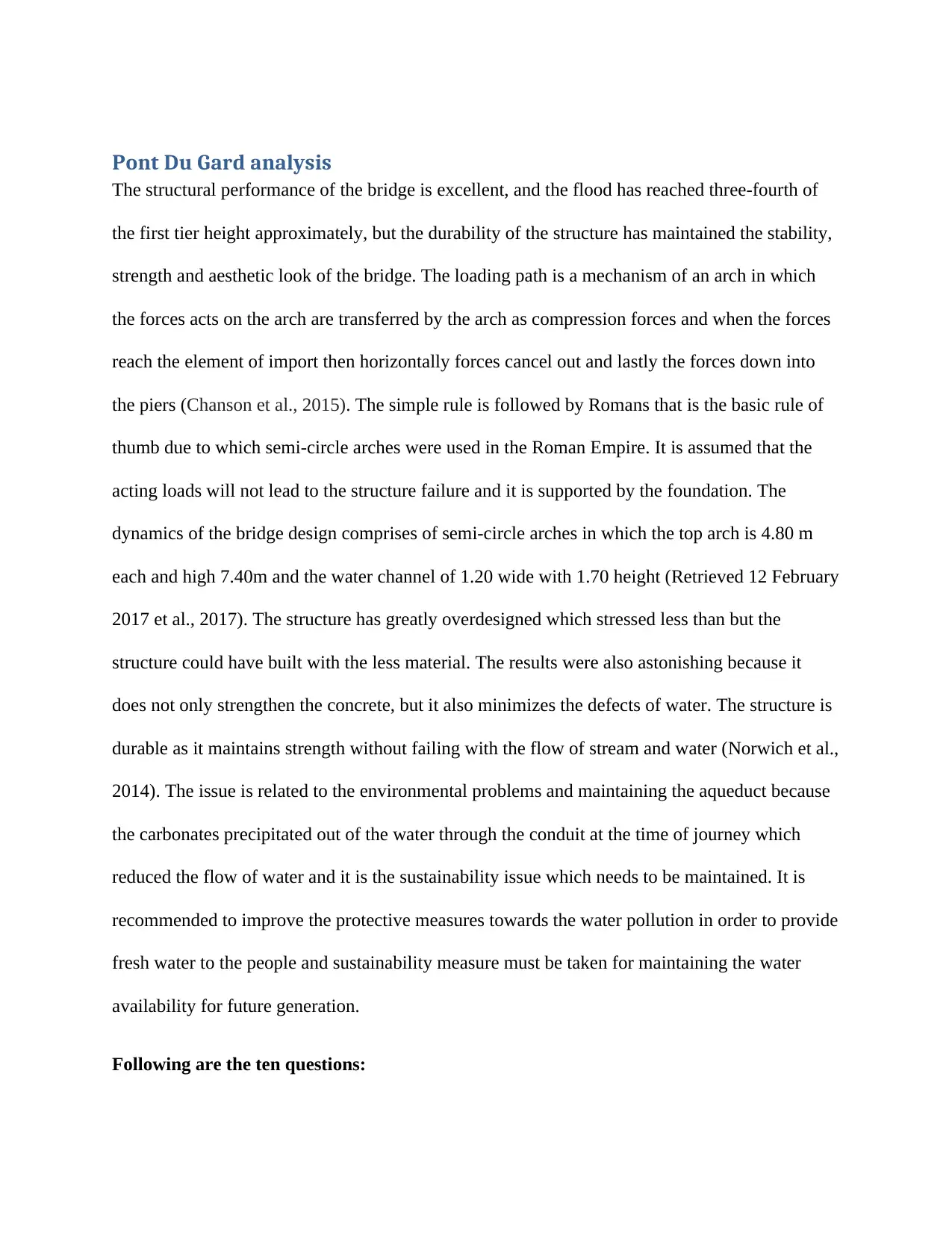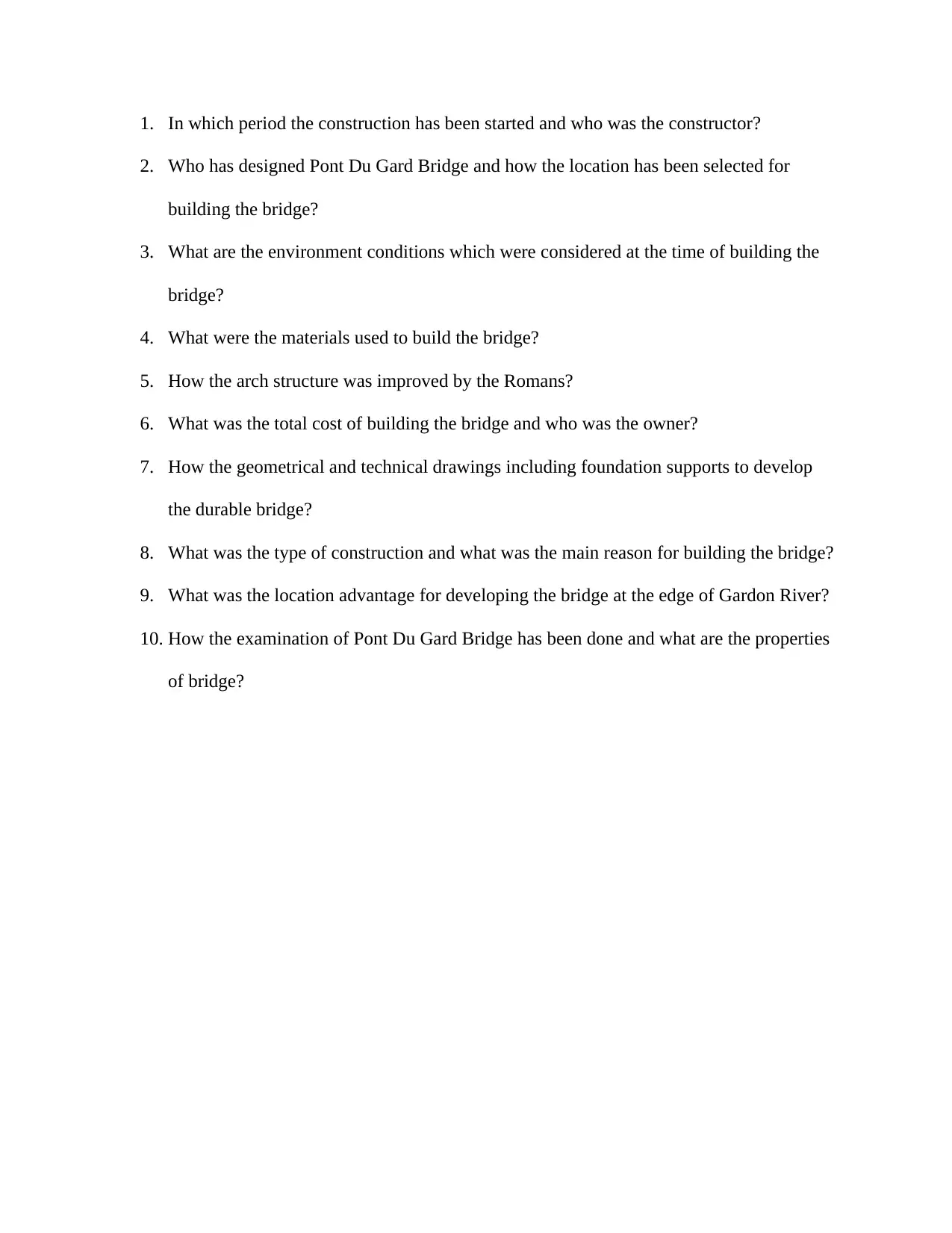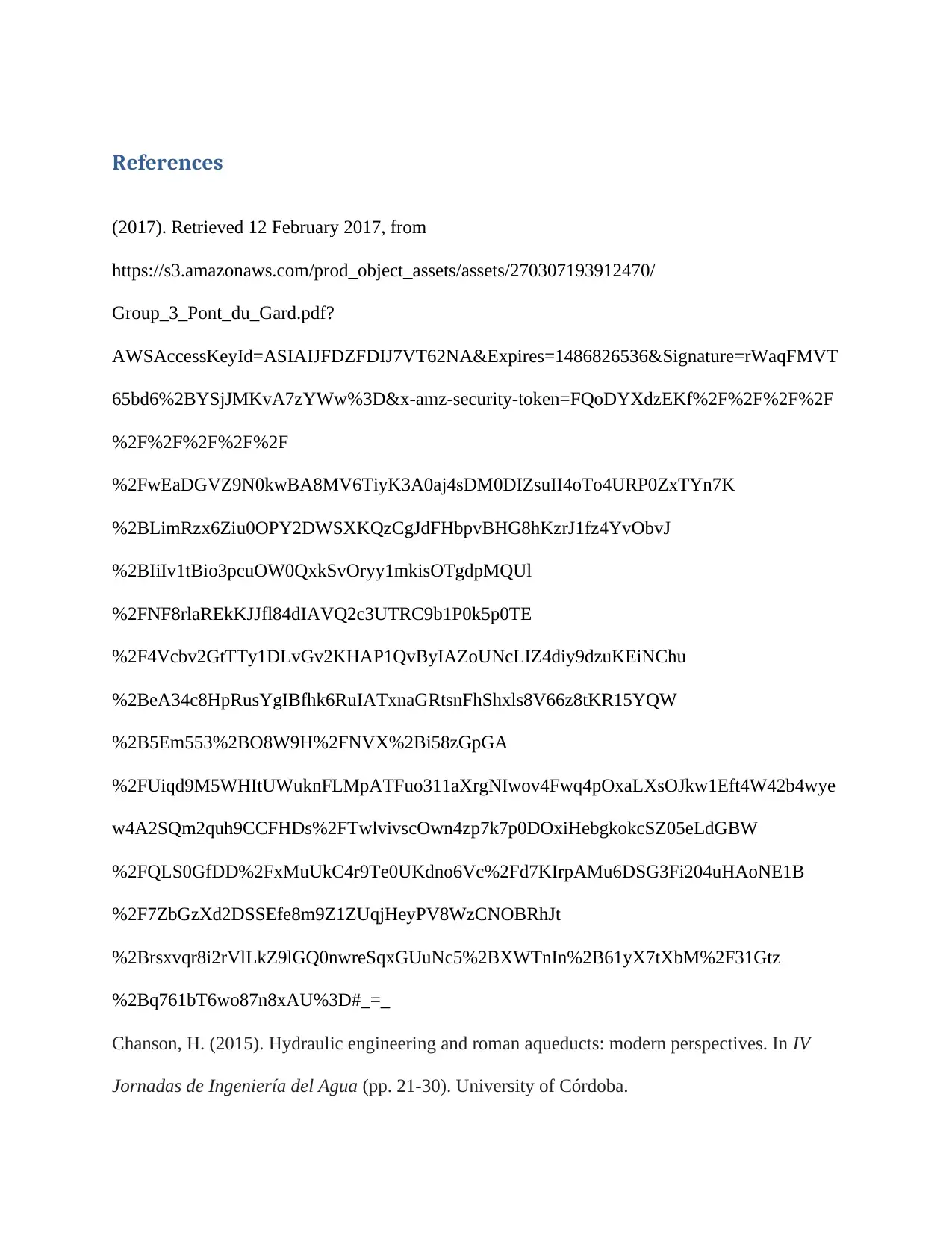Pont Du Gard Bridge: Structural Performance and Environmental Analysis
VerifiedAdded on 2019/09/20
|6
|646
|308
Report
AI Summary
This report provides an analysis of the Pont Du Gard bridge, focusing on its structural performance and environmental considerations. It examines the bridge's excellent durability and stability, even under flood conditions. The report details the arch mechanism of load transfer, the use of semi-circle arches, and the over-designed nature of the structure. It also addresses environmental issues related to carbonate precipitation and water flow reduction. The analysis includes answers to ten key questions about the bridge's construction, design, materials, and environmental conditions, along with recommendations for improving protective measures and ensuring water sustainability. The report references relevant research and provides a comprehensive overview of the bridge's engineering and environmental aspects.
1 out of 6









![[object Object]](/_next/static/media/star-bottom.7253800d.svg)